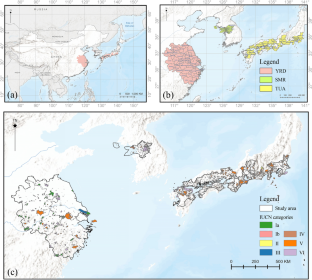Ambio ( IF 6.5 ) Pub Date : 2024-04-23 , DOI: 10.1007/s13280-024-02023-6 Qiqi Liu , Xiaolan Tang , Tian Hang , Yunfei Wu , Yuanyuan Liu , Tianrui Song , Youngkeun Song

|
Protected areas (PAs) are effective in mitigating human pressures, yet their future pressure alleviating effects remain unclear. In this study, we employed the ConvLSTM model to forecast the future human footprint and analyzed human pressure trends using Theil–Sen median and Mann–Kendall tests. We further evaluated the mitigating effects of PAs within their buffer zones (1–10 km) and the contributions of different IUCN categories of PAs to mitigating human pressure using linear regression models. The results indicate that by 2035, the average human pressure value is expected to increase by 11%, with trends exhibiting a polarized pattern. Furthermore, PAs also effectively mitigate human pressure within their 1 km buffer zones. Different categories of PAs vary in their effectiveness in mitigating human pressure, and stricter conservation areas are not always the most effective. This study can offer insights for evaluating the effectiveness of PAs in reducing human pressure and advocate for their targeted management in urban areas.
中文翻译:

探索保护区在减轻未来人类压力方面的表现
保护区(PA)可以有效缓解人类压力,但其未来的缓解压力效果仍不清楚。在本研究中,我们采用 ConvLSTM 模型来预测未来的人类足迹,并使用 Theil-Sen 中值和 Mann-Kendall 检验分析人类压力趋势。我们使用线性回归模型进一步评估了保护区在其缓冲区(1-10公里)内的缓解效果以及不同IUCN类别的保护区对减轻人类压力的贡献。结果表明,到2035年,人类平均压力值预计将增加11%,趋势呈现两极分化模式。此外,保护区还可以有效缓解1公里缓冲区内的人员压力。不同类别的保护区在减轻人类压力方面的效果各不相同,更严格的保护区并不总是最有效的。这项研究可以为评估保护区在减轻人类压力方面的有效性提供见解,并倡导在城市地区进行有针对性的管理。



























 京公网安备 11010802027423号
京公网安备 11010802027423号